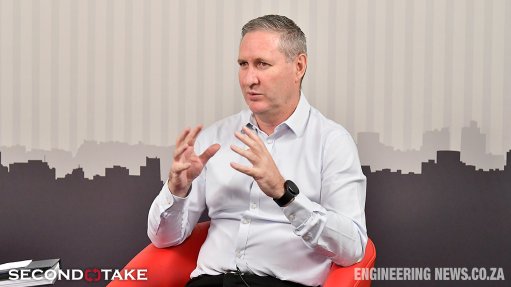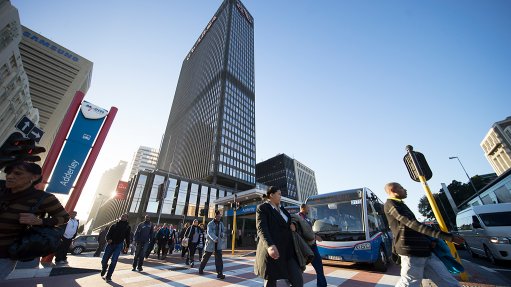Safety prioritised at Niasa workshop


NUCLEAR SAFETY To curb major nuclear incidents of the same magnitude as Chernobyl, in Ukraine, and Fukushima, in Japan, all the role-players have to commit to the core values of nuclear energy
Photo by Bloomberg
Safety culture across the nuclear value chain was in the spotlight at the Nuclear Industry Association of South Africa (Niasa) workshop, held at the Country Club Johannesburg on April 8.
The road to nuclear compliance was highlighted and the main theme of the workshop was the safety standards and practices of the proposed R1-trillion nuclear project, which is said will add 9.6 GW to the national grid by 2030.
State-owned power utility Eskom nuclear safety and human performance corporate specialist Johann Kritzinger noted in his presentation, along with nuclear safety senior adviser Crystal Robinson, that safety remains of utmost importance in light of nuclear developments.
“Nuclear accidents can happen, often with calamitous consequences. Therefore, we have to prepare ourselves for the possibility of explaining to the public why a manufactured component or an element of construction caused a nuclear malfunction on South African soil,” Kritzinger noted.
As Eskom would be the owners and operators of the proposed nuclear plants, he added, the company would be held accountable for any possible predicaments.
“Eskom will be burdened with any latent defects that might arise from the design and construction of the new nuclear plants. As the licensee, Eskom will also be accountable to the National Nuclear Regulator for all aspects regarding the nuclear safety of our contractors and vendors,” Kritzinger said.
To illustrate why nuclear safety remained an overriding consideration in the nuclear energy sector, Kritzinger and Robinson referred to the design and construction of the nuclear plants as critical, with safety being a system priority.
“[C]ompared with industrial safety procedures, nuclear has to retain a more encompassing safety aspect – instead of protecting humans from the technology used, as in conventional industrial safety procedures, nuclear involves the role-players protecting the technology (the nuclear core) . . . to safeguard employees, the public and the environment,” Kritzinger explained.
He indicated that, owing to the precarious position of the nuclear project and considering the perceptions of nuclear energy in South Africa, the country could not afford a major nuclear incident, as it could finally sway public perception against the power source and prove costly for the provider. Ultimately, this would hinder the possibility of future developments and eventual industry growth.
“While nuclear is an ultrasafe industry, nuclear safety and its development still enjoy over- riding priority.”
Kritzinger noted that, to curb major nuclear incidents of the same magnitude as Chernobyl, in Ukraine, and Fukushima, in Japan, all the role-players had to commit to the core values of nuclear energy.
“Inherently, leaders and individuals involved in the projects have to emphasise safety above competing goals to guarantee the protection of the public and the environment.”
Kritzinger highlighted that a ‘defence in depth’ (DID) approach had been used to ensure encompassing safety mechanisms at the plants, from design to decommissioning.
“DID is a safety philosophy that guides the design, construction, inspection, operation, and regulation of all nuclear facilities. Its central tenet . . . is to ultimately protect the core. Successful DID requires creating, maintaining and updating multiple independent and redundant layers of protection to compensate for potential human and mechanical failures so that no single layer, no matter how robust, is exclusively relied upon,” he added.
Kritzinger said that using the DID approach could prevent safety malfunctions, such as the incident at Eskom’s Koeberg power station last year. During maintenance, a piece of improperly constructed scaffolding touched the nuclear star point, restricting earth fault protection and causing two breakers, a turbine and reactor to trip.
“This resulted in the loss of 400 kV needed for all the decay heat to be evacuated. In this case, we relied on a 132 kV line from the Acacia power station, on the outskirts of Cape Town, to keep the reactor running. As an absolute last resort, diesel generators are used to keep the reactor running. A loss of all off-site supplies leads to disaster such as what happened in Fukushima, Japan.”
He added that it had later been established that diminished sensitivity to the risks of performing work in prohibited and live areas while units were in power, as well as endemic weaknesses in plant safety regulations, was the root cause of the Koeberg incident.
Kritzinger added that Eskom’s objective was not only to change attitudes regarding nuclear safety protocols but also to establish and maintain a culture which enhances nuclear safety.
“All Level 1 vendors and contractors in the nuclear projects are subjected to Eskom’s Safety Culture Enhancement Plan,” he said, adding that this ensured that suppliers had a safety culture procedure, as well as an improvement, oversight and measurement plan in place, to improve the safety culture at Eskom sites.
Comments
Press Office
Announcements
What's On
Subscribe to improve your user experience...
Option 1 (equivalent of R125 a month):
Receive a weekly copy of Creamer Media's Engineering News & Mining Weekly magazine
(print copy for those in South Africa and e-magazine for those outside of South Africa)
Receive daily email newsletters
Access to full search results
Access archive of magazine back copies
Access to Projects in Progress
Access to ONE Research Report of your choice in PDF format
Option 2 (equivalent of R375 a month):
All benefits from Option 1
PLUS
Access to Creamer Media's Research Channel Africa for ALL Research Reports, in PDF format, on various industrial and mining sectors
including Electricity; Water; Energy Transition; Hydrogen; Roads, Rail and Ports; Coal; Gold; Platinum; Battery Metals; etc.
Already a subscriber?
Forgotten your password?
Receive weekly copy of Creamer Media's Engineering News & Mining Weekly magazine (print copy for those in South Africa and e-magazine for those outside of South Africa)
➕
Recieve daily email newsletters
➕
Access to full search results
➕
Access archive of magazine back copies
➕
Access to Projects in Progress
➕
Access to ONE Research Report of your choice in PDF format
RESEARCH CHANNEL AFRICA
R4500 (equivalent of R375 a month)
SUBSCRIBEAll benefits from Option 1
➕
Access to Creamer Media's Research Channel Africa for ALL Research Reports on various industrial and mining sectors, in PDF format, including on:
Electricity
➕
Water
➕
Energy Transition
➕
Hydrogen
➕
Roads, Rail and Ports
➕
Coal
➕
Gold
➕
Platinum
➕
Battery Metals
➕
etc.
Receive all benefits from Option 1 or Option 2 delivered to numerous people at your company
➕
Multiple User names and Passwords for simultaneous log-ins
➕
Intranet integration access to all in your organisation


















